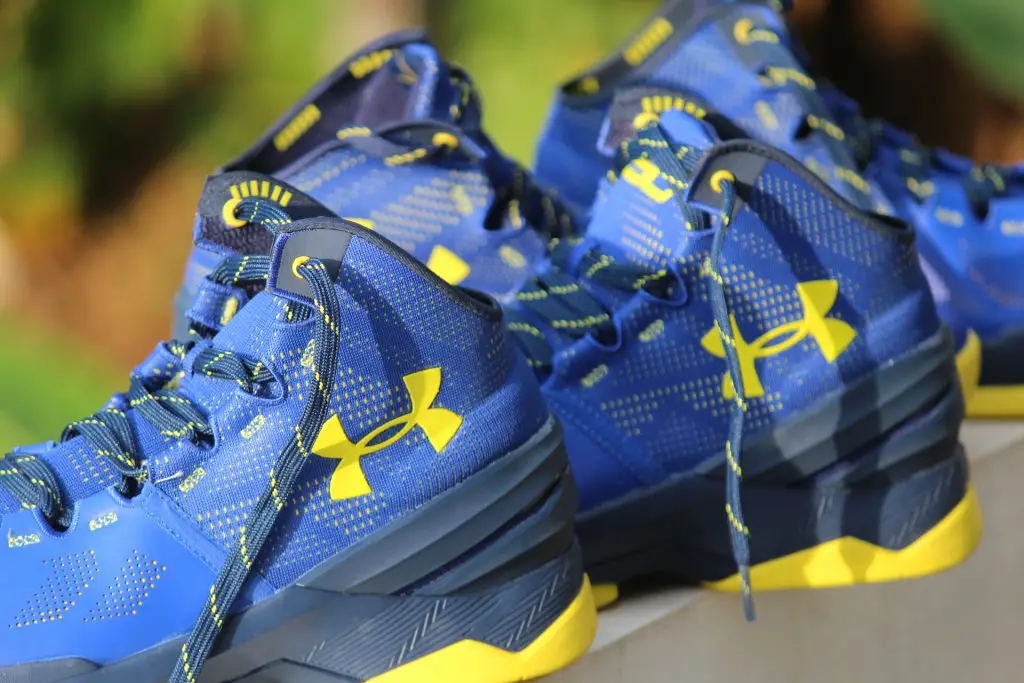Under Armour, a renowned American sportswear company, has developed a comprehensive strategy to generate revenue and remain competitive in the athletic apparel industry.
History of Under Armour
The history of Under Armour is a story of innovation, expansion, and strategic marketing that turned a simple idea into a global sports apparel brand. Here’s an overview of its journey:
Founding and Early Development
Under Armour was founded on September 25, 1996, by Kevin Plank, a former special teams captain of the University of Maryland football team. As a player, Plank was frustrated with the sweat-soaked T-shirts he wore under his jersey. This led him to develop a moisture-wicking T-shirt made from synthetic fabric, a concept that was new at the time. Plank started Under Armour from his grandmother’s basement in Washington, D.C., and traveled the East Coast selling his innovative apparel from the trunk of his car. His first significant sale was at the end of 1996 for $17,000.
Breakthrough and Growth
Under Armour’s big break came in 1999 when Warner Brothers featured the brand in two of its films, “Any Given Sunday” and “The Replacements.” This exposure, coupled with a strategic ad in ESPN The Magazine, significantly boosted sales. The following year, the brand became the official outfitter of the XFL football league. In 2003, a $12 million investment from Rosewood Capital further propelled the company’s growth. The same year, Under Armour released its first television commercial with the tagline “Protect this house,” and in 2005, the company went public on the NASDAQ, raising $153 million.
Expansion and Innovation

Under Armour continued to expand its product lines and market reach. In 2009, it formed an alliance with Cal Ripken Jr.’s Ripken Baseball, providing uniforms for the minor league Aberdeen IronBirds and youth teams in the Cal Ripken World Series.
The brand also gained attention for its major sponsorship of the reality TV show “Duck Dynasty” and provided suits for speedskaters in the 2014 Winter Olympics.
Strategic Acquisitions and Leadership Changes
In November 2013, Under Armour acquired digital app maker MapMyFitness for $150 million, marking its foray into the digital fitness space. This was followed by the acquisition of MyFitnessPal for $475 million and Endomondo for $85 million in 2015.
In October 2019, Kevin Plank announced he would step down as CEO, succeeded by Patrik Frisk in January 2020. Amidst these changes, the company faced challenges during the 2020 pandemic in 2020, resulting in a significant revenue decline, although it fared better than expected.
Recent Developments
As of September 11, 2023, Under Armour appointed John Varvatos as its chief design officer, indicating a continued focus on innovation and design excellence.
From its humble beginnings in a basement to becoming a competitor against giants like Nike and Adidas, Under Armour’s history is a testament to the power of innovation, strategic marketing, and adaptability in the dynamic world of sports apparel.
How Does Under Armour Make Money?
Here’s how Under Armour makes its money:
Retail Sales
A significant portion of Under Armour’s revenue comes from retail sales. The company operates both physical stores and an e-commerce platform, enabling customers to purchase products directly.
This direct-to-consumer approach allows Under Armour to offer a broad range of athletic apparel, footwear, and accessories while retaining a larger share of the profits compared to sales through third-party retailers.
Wholesale Distribution
Under Armour also relies on wholesale distribution to generate income. The company partners with various retailers, including department stores, sporting goods stores, and specialty fitness retailers, to sell its products.
This method of distribution helps Under Armour to widen its market reach and enhance brand visibility.
Licensing and Endorsements
Leveraging its strong brand image, Under Armour secures lucrative licensing and endorsement deals.
The company collaborates with professional athletes, teams, and leagues to endorse and promote their products. These deals are not only a source of revenue but also serve as effective marketing strategies, increasing brand awareness and driving sales.
Under Armour also licenses its brand for the production and sale of athletic equipment, accessories, and lifestyle apparel.
Connected Fitness
Exploring the digital domain, Under Armour has ventured into the Connected Fitness segment. This includes various fitness apps like MyFitnessPal, MapMyFitness, and Endomondo, offering personalized workout plans, nutrition tracking, and social features.
It monetizes this segment through advertising and premium subscriptions, which provide enhanced features and content to users.
This segment not only contributes to revenue but also offers valuable data and insights for product development and marketing strategies.
International Sales
Under Armour has expanded its operations beyond the United States, establishing a strong international presence.
The company generates revenue by selling its products globally through retail stores, e-commerce platforms, and partnerships with international retailers.
This international expansion allows Under Armour to tap into the growing global demand for athletic apparel and further diversify its revenue streams.
E-commerce Growth
Under Armour’s recent financial reports highlight the growth in their e-commerce revenue. In the fiscal second quarter of 2023, the company reported a 2% growth in e-commerce revenue, contributing to a 3% growth in direct-to-consumer sales, which totaled $596 million.
E-commerce revenue accounted for about $208 million. This growth in online sales is a testament to Under Armour’s focus on enhancing its digital platforms, including improving search and browse capabilities, upgrading size and fit guides, and increasing mobile speed.
How it Works

Under Armour operates through a combination of innovative technology, performance-focused design, and strategic marketing.
Here’s how the company works to deliver its products and maintain its brand reputation:
- Moisture Transport System: Under Armour is renowned for its Moisture Transport System, which is designed to wick sweat and moisture away from the body and through the material, allowing it to evaporate quickly. This technology ensures that both the athlete and their clothing remain dry, even during intense physical activity.
- ColdGear and HeatGear: The company offers ColdGear for cold weather, which is made of lightweight fabric that keeps the athlete warm without adding bulk or restricting movement. For warm or hot conditions, Under Armour’s HeatGear keeps the wearer cool, dry, and light. Both types of gear are tailored to provide optimal comfort and performance in varying temperatures.
- UA RUSH: This range includes compression gear that not only improves circulation and clears lactic acid but also incorporates infrared therapy to enhance endurance and strength. This feature is particularly beneficial for athletes looking to improve their performance and recovery time.
- Labor Conditions: On the labor front, Under Armour has received criticism for not being transparent enough. While some of its supply chain is certified by the FLA Workplace Code of Conduct, the brand has received a lower score in the Fashion Transparency Index.
- Material and Care: Under Armour’s clothing, including items made from natural fabric materials, can be cared for using common household washers and dryers. These garments may shrink but can stretch back to their original size after multiple uses.
- UV Protection: The brand also includes Ultra-Violet Protection Factor (UPF) in some of its gear, which provides extra protection from UV rays, benefiting the user’s skin, body, and overall health.
- Compression Technology: Under Armour’s compression garments are designed to support and stabilize muscles during exercise, increasing blood flow and muscle oxygenation. This enhances athletic performance and reduces muscle fatigue post-workouts.
Under Armour’s operational effectiveness lies in its commitment to innovation in sports apparel, focusing on technology that enhances athletic performance and comfort. This approach, combined with strategic marketing and a growing emphasis on sustainable and ethical production, continues to position Under Armour as a leader in the sports apparel industry.
Also read // How does Virtu Financial Make Money?
Funding, Revenue & Valuation

Under Armour, a major player in the sports apparel industry, has achieved significant financial milestones since its inception. Here’s an overview of its funding, revenue, and valuation as of 2023:
Funding
- Under Armour has participated in only one round of funding since it was founded in 1996. According to Owler, the funding round occurred in November 2005, during which the company raised a total of $157.6 million.
Revenue
- Under Armour’s total revenue for the trailing twelve months (TTM) as of 2023 is $5.86 billion. This represents a slight increase from the $5.80 billion in revenue for 2022, and a more substantial rise from the $5.68 billion recorded in 2021. The company has shown a consistent growth trend in its annual revenue over the past years, with significant increases noted since 2010.
Valuation
- As of November 2023, Under Armour’s market capitalization, which is an indicator of the company’s total value in the stock market, is reported to be between $3.09 billion and $3.33 billion. This valuation places Under Armour within the mid-cap stock category. The market cap has fluctuated over recent times, with a slight decrease of -16.35% over one year but an increase of 8.06% over the past 30 days.
- In terms of its share price and intrinsic value, Under Armour appears to be priced fairly, trading around 13% below its intrinsic value. The company’s share price has seen significant fluctuations, suggesting potential for future buying opportunities due to its high price volatility.
These financial details paint a picture of a company that has grown steadily over the years, managing to raise significant capital in its early stages and maintaining a stable growth in revenue. Under Armour’s market valuation, while experiencing fluctuations, indicates its solid standing in the market as a mid-cap company.
Conclusion
In conclusion, Under Armour’s multifaceted revenue generation strategy, combining retail sales, wholesale distribution, licensing and endorsements, digital initiatives, and international expansion, positions it as a key player in the competitive athletic apparel industry. By continuously adapting to consumer trends and exploring new avenues for growth, Under Armour demonstrates its commitment to innovation and brand strength.

